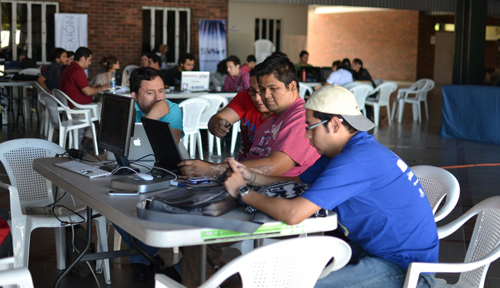También disponible en español

There is a statistic that both astonishes and troubles me: the leading cause of injury to women is not traffic accidents, crime or serious disease. It is domestic violence.
One in four women will fall victim to this type of violence in her lifetime. In other words, a quarter of the female population, a shocking figure that reminds us that these are not anonymous women, but rather acquaintances, colleagues, neighbors, people we run into on the subway every day.
I say women because they make up the vast majority of victims. To make matters worse, most cases are never reported. In surveys, women are frequently reluctant to acknowledge the abuse they have suffered at the hands of partners or relatives.
This makes it extraordinarily difficult to obtain an accurate picture of the problem. Domestic violence is a global ill that affects both developed and emerging societies.
However, it is particularly widespread in Latin America. For example, in Central America, half of all women are at risk of domestic violence during their lifetime. Beyond the physical and mental suffering caused by this scourge, domestic violence clearly hinders the development of nations.
It not only impacts the individual, but also affects societies and economies, given that victims cannot fully participate or contribute. I believe that complex problems require a variety of solutions. Here at the World Bank, we have been analyzing different types of gender violence and have observed that women’s capacity to act and make their own decisions is crucial for achieving gender equality and development.
To this end, society should support women and give them the tools they need to overcome the obstacles they face. In today’s world, where the best solutions arise from the marriage of technology and the human spirit, I believe there should be digital responses to social problems.
In this spirit, last weekend we organized a hackathon against domestic violence in seven cities across Central America and in Washington D.C.. The response was spectacular, both in terms of the quality of individual contributions and the spirit of community collaboration.
Winning Apps
For 36 hours straight, nearly 400 ‘hackers’ worked to develop the best digital solutions and responses to questions such as: How can technology help victims to access legal, health and accomodation services? How can technology help to determine if someone is at risk? How can we connect victims with jobs and services to help them rebuild their lives?
The combined simplicity and effectiveness of some of the winning apps is truly impressive.
Here is a sample:
- Hackers from Washington D.C. created an online application against cyber-stalking. The winning proposal not only alerts victims to the presence of a tracking device, but also gives them information on how to remove it from their cell phones.
- Another application, also from the Washington D.C. hackathon, alerts friends and family when a young woman is taken abroad for a forced marriage. It is estimated that over 3,000 young women have been forcibly taken from the United States over the past two years.
- Winners in El Salvador focused on prevention, with an emergency Web and SMS-integrated hotline that provides information on gender violence and how to report it.
- In Costa Rica, hackers concentrated on teenagers. Using Facebook, they developed an app asking young people how healthy their relationship is.
- In Guatemala, where there are more cell phones than people, most of the eight prototypes created used SMS to help victims find work, report abuse and get advise in case of domestic violence.
Also in Guatemala, the winning team took advantage of the anonymity of social networks to create a virtual space where victims can share their experiences.
These are just a few of the dozens of apps created during this hackathon. Nothing would make me, and the region’s thousands of domestic violence victims, happier than to be able to make the problem disappear, as if by magic, simply by touching a screen to activate a help app.
Although this was a positive experience, we know that we are only just beginning the search for 21st-century solutions to an old and incessant problem.


Join the Conversation